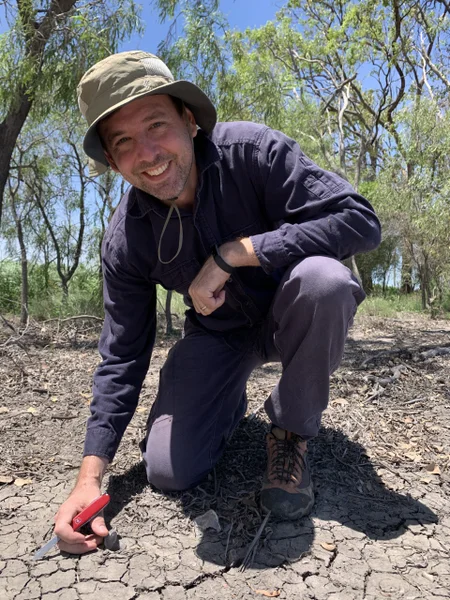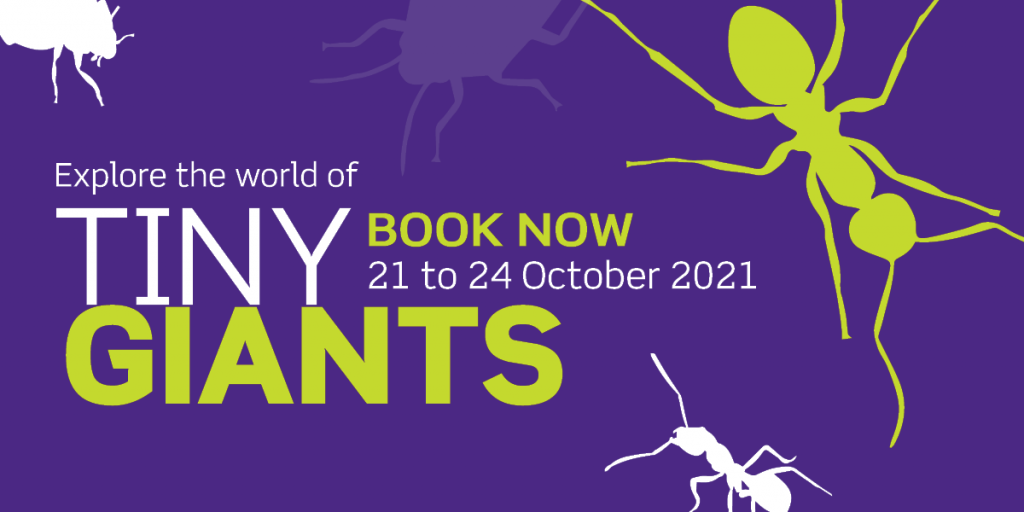Up close and personal with spiders

BOOK NOW for a workshop, talk or walk to discover the rainforest’s Tiny Giants for yourself – October 21–24.
Dr Mike Rix, Queensland Museum, likes to get up close to spiders – one creepy crawly some of us like to give a wide birth.
This October, he’ll be at Mary Cairncross to discover which of these Arachnids call the reserve home.
What research will you be doing?
I will be undertaking a detailed survey of the spider and other arachnid fauna of Mary Cairncross Scenic Reserve. As part of this, I’ll be focusing on a number of spider groups of particular scientific or conservation significance, including trapdoor spiders, pelican spiders and other rainforest species with potentially limited distributions on the Blackall Range.
Why is it important?
In order to conserve the species of Mary Cairncross Scenic Reserve we need to know what occurs there in the first instance, as there are a large number of new and undescribed arachnid species still to be found in rainforest habitats. Knowing what species occur in conservation estates like Mary Cairncross is also essential for understanding any changes in faunal composition over time, such as changes caused by climate change.
What will you do with the research after the event?
After the field survey work, I will sort and identify the different species collected in the park, and register them into the Queensland Museum State Fauna Collection. This will provide a permanent record of the arachnid fauna of Mary Cairncross Scenic Reserve, therefore guiding conservation planning into the future. In time, any new and undescribed species will also be formally named.
BOOK NOW for a workshop, talk or walk to discover the rainforest’s Tiny Giants for yourself – October 21–24.

Pelican Spider; Austrarchaea_judyae. Credit Dr Mike Rix
About Dr Mike Rix
Dr Mike Rix is a Principal Curator of Arachnology and Research Fellow in the Biodiversity and Geosciences Program at the Queensland Museum.
The overriding aim of his research is to combine phylogenetic approaches to explore biogeographic and other evolutionary problems, with revisionary taxonomic approaches to describe and conserve species.
He has dedicated most of his career to working with collections and to taxonomically documenting the remarkable spider faunas of Australia and the other Austral continents and has described 230 species in eight families.
Twelve scientists joining in the research project
- Dr Christine Lambkin (QM Curator of Entomology)
- Dr Chris Burwell (QM Senior Curator of Insects)
- Dr Mike Rix (QM Principal Curator of Arachnology)
- Kathryn Ebert (Postdoctural researcher at University of Queensland)
- Owen Seeman (QM Collection Manager of Arachnids)
- Dr Penny Mills (Entomological Society of Queensland)
- Chris Moeseneder (Research Associate, Australian Museum)
- Jessa Thurman (PhD candidate University of Queensland)
- Dr Jason Maté (Entomological Society of Queensland)
- Dr Andrew Maynard ( Entomological Society of Queensland)
- Wesley Jenkinson (Entomological Society of Queensland)
- Dr Vivian Sandoval Gomèz ( Honorary Research Fellow of the Queensland)
